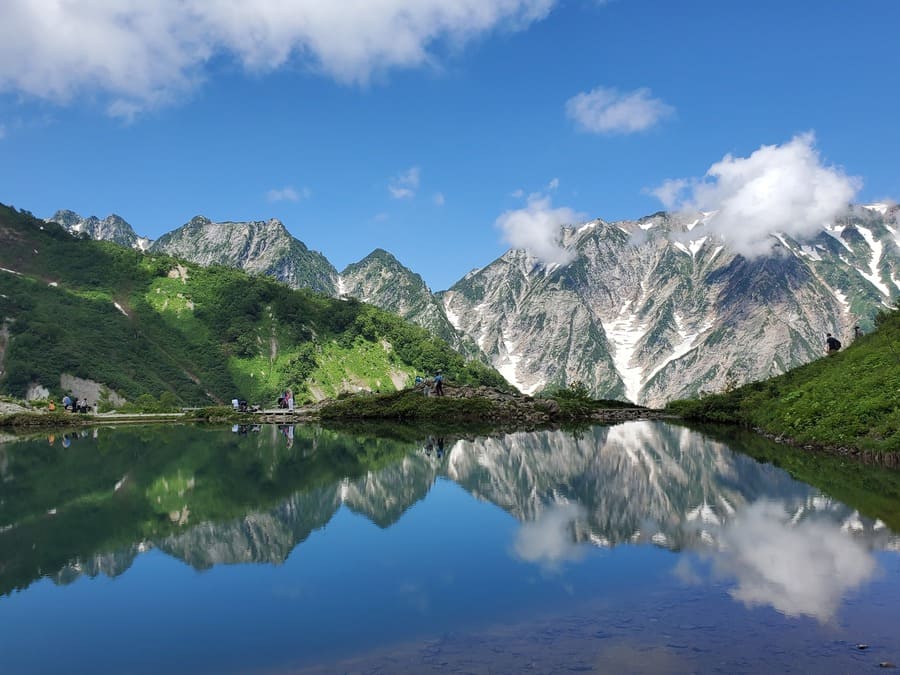Why are Japanese Alps Mountains So Prominent?
Unveiling Their Geological Significance Why are Japanese Alps Mountains So Prominent
Japanese Alps Mountains prominence

Nestled on the island nation of Japan, the Japanese Alps Mountains stand as a testament to the awe-inspiring power of geological forces. Rising majestically through the heart of the country. These mountains have captivated the imaginations of both locals and travelers for centuries. In this blog post, we will delve into the fascinating world of the Japanese Alps. Exploring the reasons behind their prominence and the geological wonders that have shaped them.
The Formation of Japanese Alps
The Japanese Alps consist of three distinct ranges: the Northern Alps (or the “Hida Mountains”), the Central Alps (or the “Kiso Mountains”), and the Southern Alps (or the “Akaishi Mountains”). These mountain ranges are characterized by their rugged terrain, towering peaks, and stunning alpine landscapes. But how did they come into existence?
1. Tectonic Plate Movements
The primary reason behind the prominence of the Japanese Alps lies in the complex interactions of tectonic plates. Japan is situated on the Pacific Ring of Fire, an area marked by intense tectonic activity, including the collision of the Pacific Plate and the Philippine Sea Plate. This collision led to the uplifting of the Earth’s crust, giving birth to the Japanese Alps.
Japanese Alps Mountains Formation
The Northern Alps, for instance, are a result of the Pacific Plate subducting beneath the North American Plate. This subduction caused the crust to crumple and uplift, creating the towering peaks we see today.
2. Uplift and Erosion
Over millions of years, the Japanese Alps have continued to rise due to tectonic activity. Simultaneously, the forces of erosion, primarily through glacial action, have played a pivotal role in shaping these mountains. Glaciers in the alpine regions have carved deep valleys, fjords, and cirques, adding to the dramatic topography of the Japanese Alps.
3. Volcanic Activity
Another geological factor contributing to the prominence of the Japanese Alps is volcanic activity. Japan is part of the Pacific Ring of Fire, known for its volcanoes. Volcanic eruptions in the past have deposited volcanic ash and lava, further shaping the landscape and creating fertile soils that support rich biodiversity.
The Cultural Significance
Beyond their geological significance, the Japanese Alps hold immense cultural importance. They have been revered in Japanese folklore, art, and literature for centuries. Ancient Shinto beliefs considered mountains as sacred, and the Japanese Alps were believed to be the dwelling places of kami (spirits). This cultural reverence has contributed to the preservation of the natural beauty and biodiversity of the region.
Prominent Peaks
The Japanese Alps are home to some of Japan’s highest and most iconic peaks. Notable summits include:
Mount Fuji:
Although technically not part of the Japanese Alps, Mount Fuji is often associated with the region. It is Japan’s highest peak and an iconic symbol of the country.
Mount Ontake:
Located in the Northern Alps, Mount Ontake is the second-highest volcano in Japan and a popular destination for hikers and pilgrims.
Mount Hotaka:
Part of the Northern Alps, Mount Hotaka boasts stunning alpine scenery and is a favorite among mountaineers.
Mount Kita:
The highest peak in the Japanese Alps, Mount Kita, is located in the Northern Alps and offers breathtaking views.
Biodiversity and Conservation
The Japanese Alps are known for their rich biodiversity, with numerous plant and animal species adapted to the unique alpine environment. However, this fragile ecosystem faces challenges due to climate change and habitat degradation. Conservation efforts are underway to protect the diverse flora and fauna of the region, ensuring its ecological sustainability.
Conclusion
In conclusion, the prominence of the Japanese Alps Mountains is a testament to the dynamic geological processes that have shaped our planet. These majestic ranges, formed through tectonic plate movements, uplift, erosion, and volcanic activity, stand as a natural wonder and a source of inspiration for generations. Their cultural significance, biodiversity, and breathtaking landscapes make them a treasure not only for Japan but for the world.
As we continue to study and appreciate the geological marvel that is the Japanese Alps. It reminds us of the incredible forces that have shaped our planet and the importance protecting them so that future generations can enjoy them.




